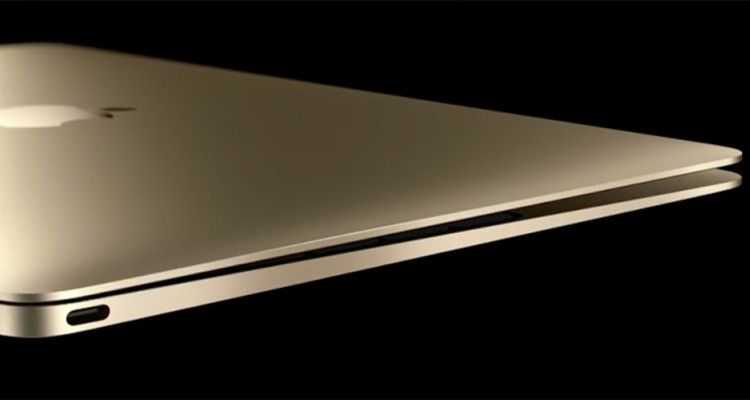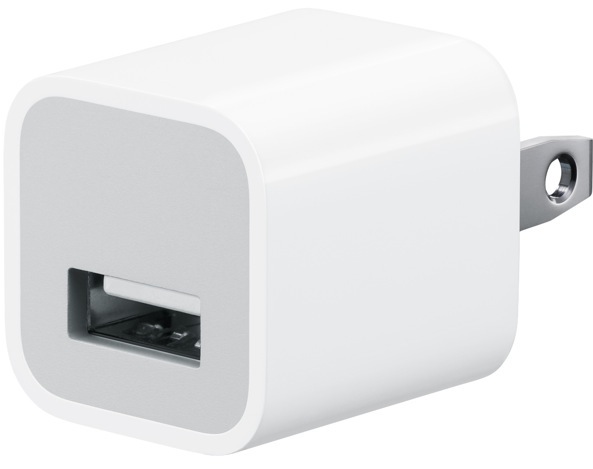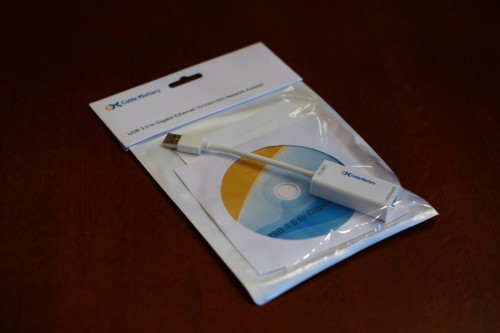As a gadget owner, you should be akin to the rare occasion of uncontrolled fit and rage you can experience once your device chooses to have a mind of its own. A recent glitch we noticed with certain Mac computer owners running macOS Sierra was the complaint that mac recovery mode not working.
Jul 11, 2020 A non-working USB port creates many unpleasant situations for users. They cannot connect a third-party mouse or keyboard to the Mac. Moreover, attaching a hard drive to your Mac can be problematic if the USB ports on Mac stop working. Most important, users cannot back up their iPhone using a lightning cable. How to Troubleshoot 'USB Port Not. The OS on my Mac recently stopped working and in order to fix the issue I needed to use a bootable USB drive to reinstall the OS. I'm going to take you throu. How to Connect Camera on Mac. When connecting a camera to a Mac computer, you can simply connect the camera's USB cable to any matching USB port on the Mac. Keep in mind that USB Type-A ports are not reversible, unlike USB Type-C ports, so the cable will only go in one way. If it doesn't insert easily, don't force it in — you could. If your cam won't work properly with Apple apps in any OS X 10.11.4 user account, use OS X Recovery to completely reinstall your Mac OS X 10.11.4 from the Recovery System stored on your startup drive. Don't bother testing Skype or other third-party apps until you have your camera working with Apple apps.
The first complaint we received was from a user running a Mac mini 2014 who replaced his Hard Disk Drive (HDD) with a Solid State Drive (SDD), he complained of not seeing the Apple logo appearing on the screen to signify his PC was loading. In a bid to fix this glitch, he tried various shortcuts to start the computer in Safe Mode and Recovery Mode to no avail. Hence we pen this article as a detailed solution to the mac recovery mode not working issue.



What is MacBook Recovery Mode?
It would be erroneous to believe all Mac users know what the Mac Recovery Mode is, hence we begin with a basic description of the mode. Mac Recovery Mode is a dedicated partition of the disk that contains a recovery image and an OS X installer duplicate. It is a multifunctional inbuilt Mac utility that enables Mac users safely recover or restore their data from Time Machine, fix or wipe their hard disk, access online help and even to reinstall macOS. Also, with the advent of a software malfunction or issue, the MacBook Recovery Mode helps Mac recover as its name implies. To access macOS Recovery on your Mac, follow the procedure below:
1. Power on your Mac by clicking the Power button.
2. Immediately after 1. above, long press the Command + R key combination on your keyboard until the spinning globe or the Apple logo appears.
All software for mac os x. 3. Wait till you see the macOS utility tab appear then select your preferred course of action.
4. To exit the macOS recovery, select the Shut Down option from the Apple menu.
What to Do when MacBook Recovery Mode won't Work?
In some instances, when it is pertinent for users to restart their MacBook via the recovery mode, they might be distraught to discover that the mac recovery mode is not working. Whenever this happens, more recent Mac computers automatically switch to starting up the macOS from the internet and when this occurs you see the spinning globe in place of the Apple logo.
To save time and to manually induce the macOS recovery over the internet, during startup long press the Option-Command-R buttons or the Shift-Option-Command-R buttons. Should in case the mac recovery mode not working problem still persist, consider executing the following steps:
Method 1: Use Your Time Machine Backup
As a Mac user, it is possible you have Time Machine connected the Backup external drive. If so, follow the below procedure to use its inherent Recovery Mode:
1. Restart your Mac. Click the Options tab when you hear the startup music.
2. Connect your Time Machine and wait. The connected Time Machine should boot after a while.
3. Select the Recovery Drive to boot your Mac.
Method 2: Use a Bootable Disk Drive Utility

What is MacBook Recovery Mode?
It would be erroneous to believe all Mac users know what the Mac Recovery Mode is, hence we begin with a basic description of the mode. Mac Recovery Mode is a dedicated partition of the disk that contains a recovery image and an OS X installer duplicate. It is a multifunctional inbuilt Mac utility that enables Mac users safely recover or restore their data from Time Machine, fix or wipe their hard disk, access online help and even to reinstall macOS. Also, with the advent of a software malfunction or issue, the MacBook Recovery Mode helps Mac recover as its name implies. To access macOS Recovery on your Mac, follow the procedure below:
1. Power on your Mac by clicking the Power button.
2. Immediately after 1. above, long press the Command + R key combination on your keyboard until the spinning globe or the Apple logo appears.
All software for mac os x. 3. Wait till you see the macOS utility tab appear then select your preferred course of action.
4. To exit the macOS recovery, select the Shut Down option from the Apple menu.
What to Do when MacBook Recovery Mode won't Work?
In some instances, when it is pertinent for users to restart their MacBook via the recovery mode, they might be distraught to discover that the mac recovery mode is not working. Whenever this happens, more recent Mac computers automatically switch to starting up the macOS from the internet and when this occurs you see the spinning globe in place of the Apple logo.
To save time and to manually induce the macOS recovery over the internet, during startup long press the Option-Command-R buttons or the Shift-Option-Command-R buttons. Should in case the mac recovery mode not working problem still persist, consider executing the following steps:
Method 1: Use Your Time Machine Backup
As a Mac user, it is possible you have Time Machine connected the Backup external drive. If so, follow the below procedure to use its inherent Recovery Mode:
1. Restart your Mac. Click the Options tab when you hear the startup music.
2. Connect your Time Machine and wait. The connected Time Machine should boot after a while.
3. Select the Recovery Drive to boot your Mac.
Method 2: Use a Bootable Disk Drive Utility
It is essential for all Mac users to possess a dedicated USB for this reason that would contain a bootable OS X installer to fix their Mac should the need ever arise. To use a bootable drive in Recovery Mode, follow the steps below:
1. Restart your Mac. Continuously tap the Options button until you hear a chime sound.
2. Connect the bootable installer drive to your Mac.
3. Select the drive from the popup list. Mac will restart then you can repair Mac.
Method 3: Use Mac Internet Recovery
If you have internet connectivity on your mac, then you can successfully try this procedure:
1. Restart your Mac.
2. When you hear the startup music, long press Option + Command + R until you see a globe appear and a status bar.
3. If you use Wi-Fi, select your available Wi-Fi.
4. Wait for the status bar to load completely then follow the prompts to complete the process.
Method 4: Use Third-Party Solutions
Backing up can be a major data for Mac users because its usefulness only becomes important when danger strikes. Hence, certain third-party solutions exist that encourage users to have complete backups as failsafe for their cherished data. An endless myriad of such software exists and can be accessed by using the internet help option in safari upon reboot.
Adobe Flash Player is available on Mac OS. It has a separate client for Windows 7 or older OS, as well as for Windows 8 and 10. Linux users may also download the software on their devices. Do you want to download MX Player dmg for your Mac computer? Read this tutorial carefully and learn how to download and install MX Player on Mac.MX Player is loaded with tons of features and a handy user interface. It is the perfect blend of simplicity, with enhanced features. Download video player for mac. Free Download Manager for Mac. Free Download Manager for Mac is a powerful, easy-to-use and absolutely free download accelerator and manager. Moreover, FDM is 100% safe, open-source software distributed under GPL license. Mac OS X 10.5 Leopard. Get it for PowerPC or 32bit Intel. Mac OS X 10.4 Tiger. Mac OS X 10.4.7 or later is required. Get it for PowerPC or Intel. Mac OS X 10.3 Panther. QuickTime 6.5.2 or later is required. Get it for PowerPC. Mac OS X 10.2 Jaguar. Get it for PowerPC. Windows Media Player is an application for Mac that allows you to open Windows Media files: WMA (Windows Media Audio) and WMV (Windows Media Video). The newest alternative to play Windows Media files on Mac is Flip4Mac, a plugin for QuickTime that gives you the possibility to play Windows formats using the the Apple multimedia player.
Method 5: Reinstall OS X
Should the frustration of not be able to access your Mac Recovery Mode persist, it might be logical to reinstall your OS X to fix the bugs. This can be achieved by clicking the Reinstall OS X tab and agreeing with the subsequent prompts.
Usb 3.0 Not Working Properly
In conclusion, the value we place on our data is only truly felt when we lose them without a backup or failsafe, whether online or on a bootable disk. This highlights that the Mac Recovery Mode not working problem can be solved by accessing your data in the various devices storage entities used before the incidence occurred.
